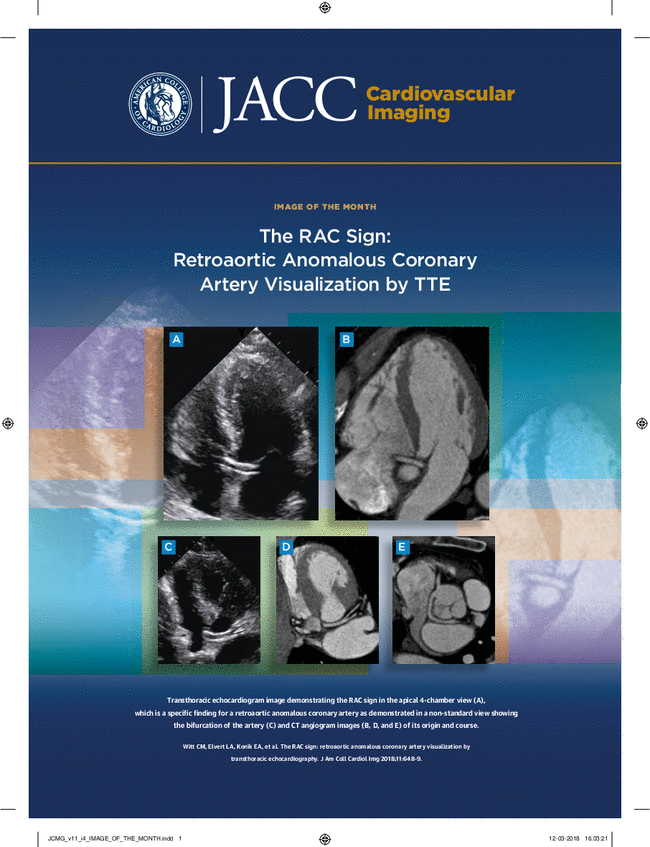Benchmarking Photon-Counting Computed Tomography Angiography Against Invasive Assessment of Coronary Stenosis
IF 12.8
1区 医学
Q1 CARDIAC & CARDIOVASCULAR SYSTEMS
引用次数: 0
Abstract
Background
Clinical guidelines do not recommend coronary computed tomographic angiography (CTA) in elderly patients or in the presence of heavy coronary calcification. Photon-counting coronary computed tomographic angiography (PCCTA) introduces ultrahigh in-plane resolution and multienergy imaging, but the ability of this technology to overcome these limitations is unclear.
Objectives
The authors evaluate the ability of PCCTA to quantitatively assess coronary luminal stenosis in the presence and absence of calcification, comparing both the ultrahigh-resolution (UHR)-PCCTA and the multienergy standard-resolution (SR)-PCCTA with the criterion-standard 3-dimensional invasive quantitative coronary angiography (3D QCA).
Methods
The authors included 100 patients who had both PCCTA and invasive coronary angiography (ICA). They comparatively evaluated luminal diameter stenosis with PCCTA and 3D QCA, anatomic disease severity (according to CAD-RADS [Coronary Artery Disease–Reporting and Data System]) and the diagnostic performance of PCCTA in identifying coronary arteries with ≥50% diameter stenosis on 3D QCA requiring invasive hemodynamic severity evaluation and/or revascularization.
Results
The authors analyzed 257 vessels and 343 plaques. UHR-PCCTA luminal evaluation relative to 3D QCA was more precise than SR-PCCTA (median difference: 3% [Q1-Q3: 1%-6%] vs 6% [Q1-Q3: 2%-11%]; P < 0.001), particularly in severely calcified arteries (median difference 3% [Q1-Q3: 1%-6%] vs 6% [Q1-Q3: 3%-13%]; P = 0.002). Per-vessel agreement for CAD-RADS between UHR-PCCTA and 3D QCA was near-perfect (κ = 0.90 [Q1-Q3: 0.84-0.95]; P < 0.001), and it was substantial for SR-PCCTA (κ = 0.63 [Q1-Q3: 0.54-0.71]; P < 0.001), especially in severely calcified arteries: κ = 0.90 (Q1-Q3: 0.83-0.97; P < 0.001) and κ = 0.67 (Q1-Q3: 0.56-0.77; P < 0.001), respectively. Per-vessel diagnostic performance of SR- and UHR-PCCTA was excellent: AUC: 0.94 (95% CI: 0.91-0.98; P < 0.001) and 0.99 (95% CI: 0.98-1.00; P < 0.001), respectively. UHR-PCCTA diagnostically outperformed SR-PCCTA: ΔAUC: 0.05 (95% CI: 0.01-0.08; P = 0.01).
Conclusions
PCCTA compares favorably with ICA for lumen assessment and anatomic disease severity classification in patients presenting with acute coronary syndrome or patients referred for ICA. UHR-PCCTA luminal evaluation is superior to SR-PCCTA, especially in patients with heavy coronary calcification. UHR-PCCTA has excellent diagnostic performance in identifying coronary arteries with ≥50% luminal stenosis on 3D QCA, outperforming standard-resolution imaging.
光子计数计算机断层血管造影对冠状动脉狭窄侵入性评估的基准:对严重钙化冠状动脉的影响。
背景:临床指南不推荐老年患者或存在严重冠状动脉钙化的患者进行冠状动脉ct血管造影(CTA)。光子计数冠状动脉计算机断层造影(PCCTA)引入了超高平面内分辨率和多能成像,但该技术克服这些限制的能力尚不清楚。目的:通过将超高分辨率(UHR)-PCCTA和多能标准分辨率(SR)-PCCTA与标准-标准三维有创定量冠状动脉造影(3D QCA)进行比较,评价PCCTA在存在钙化和不存在钙化情况下定量评估冠状动脉管腔狭窄的能力。方法:纳入100例同时行PCCTA和有创冠状动脉造影(ICA)的患者。他们比较了PCCTA和3D QCA对管腔直径狭窄、解剖疾病严重程度(根据CAD-RADS[冠状动脉疾病报告和数据系统])和PCCTA在识别冠状动脉直径≥50%狭窄需要有创血流动力学严重程度评估和/或血运重建术的3D QCA中的诊断性能。结果:作者分析了257条血管和343个斑块。UHR-PCCTA相对于3D QCA的腔内评价比SR-PCCTA更精确(中位数差:3% [Q1-Q3: 1%-6%] vs 6% [Q1-Q3: 2%-11%];P < 0.001),特别是在严重钙化的动脉中(中位差为3% [Q1-Q3: 1%-6%] vs 6% [Q1-Q3: 3%-13%];P = 0.002)。UHR-PCCTA和3D QCA之间的CAD-RADS的血管一致性接近完美(κ = 0.90 [Q1-Q3: 0.84-0.95];P < 0.001), SR-PCCTA显著(κ = 0.63 [Q1-Q3: 0.54-0.71];P < 0.001),特别是在严重钙化的动脉中:κ = 0.90 (Q1-Q3: 0.83-0.97;P < 0.001), κ = 0.67 (Q1-Q3: 0.56-0.77;P < 0.001)。SR-和UHR-PCCTA的血管诊断性能非常好:AUC: 0.94 (95% CI: 0.91-0.98;P < 0.001)和0.99 (95% CI: 0.98-1.00;P < 0.001)。UHR-PCCTA诊断优于SR-PCCTA: ΔAUC: 0.05 (95% CI: 0.01-0.08;P = 0.01)。结论:在急性冠状动脉综合征患者或转行ICA的患者中,PCCTA在管腔评估和解剖疾病严重程度分级方面优于ICA。UHR-PCCTA腔内评价优于SR-PCCTA,特别是在冠状动脉钙化严重的患者中。UHR-PCCTA在3D QCA上识别管腔狭窄≥50%的冠状动脉具有优异的诊断性能,优于标准分辨率成像。
本文章由计算机程序翻译,如有差异,请以英文原文为准。
求助全文
约1分钟内获得全文
求助全文
来源期刊

JACC. Cardiovascular imaging
CARDIAC & CARDIOVASCULAR SYSTEMS-RADIOLOGY, NUCLEAR MEDICINE & MEDICAL IMAGING
CiteScore
24.90
自引率
5.70%
发文量
330
审稿时长
4-8 weeks
期刊介绍:
JACC: Cardiovascular Imaging, part of the prestigious Journal of the American College of Cardiology (JACC) family, offers readers a comprehensive perspective on all aspects of cardiovascular imaging. This specialist journal covers original clinical research on both non-invasive and invasive imaging techniques, including echocardiography, CT, CMR, nuclear, optical imaging, and cine-angiography.
JACC. Cardiovascular imaging highlights advances in basic science and molecular imaging that are expected to significantly impact clinical practice in the next decade. This influence encompasses improvements in diagnostic performance, enhanced understanding of the pathogenetic basis of diseases, and advancements in therapy.
In addition to cutting-edge research,the content of JACC: Cardiovascular Imaging emphasizes practical aspects for the practicing cardiologist, including advocacy and practice management.The journal also features state-of-the-art reviews, ensuring a well-rounded and insightful resource for professionals in the field of cardiovascular imaging.
 求助内容:
求助内容: 应助结果提醒方式:
应助结果提醒方式:


